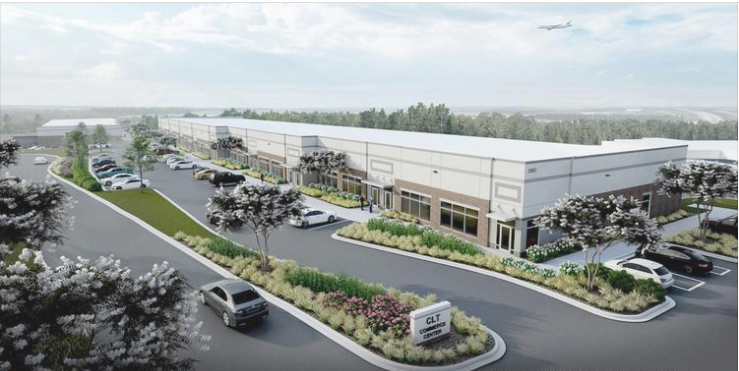Maryland-based developer, Greenberg Gibbons Properties recently broke ground on the CLT Commerce Center and has begun construction near the CLT Airport (Charlotte Douglas International Airport).
Located off West Boulevard and Billy Graham Parkway near CLT Airport, the CLT Commerce Center will be built on 17-acres of land, with three flex industrial buildings occupying about 121,440 square feet.
Also read US $740 million Red Bull production facility to be built in Concord, North Carolina
These industrial buildings are intended for logistics, technology, R&D, laboratory, warehousing and light manufacturing purposes. According to the design plan, the development space for each of the three industrial buildings will be 48,500 square feet, 39,510 square feet and 33,380 square feet. Their design also includes an 18-foot ceiling height and they will also have enough room for accommodating tenants, starting at 2,520 square feet
The construction team working on the CLT Commerce Center is made up of the general contractor, Landmark Builders; McMillan Pazdan Smith, handling the architectural aspect; CBRE’s Bryan Crutcher and Alek Salfia, handling leasing arrangements, and M&T Bank is also collaborating with the developers, Greenberg Gibbons Properties on the project.
President of Greenberg Gibbons, Alex Laperouse expressed his gratitude and thanked Charlotte for welcoming GGP into their City. He also gave more insights on the company’s mission and strategy.
Laperouse stated, “At GGP we design our projects through a customer’s lens to optimize our tenant’s operational needs. The CLT Commerce Center will be a great place for businesses to call home.”
According to Laperouse, the company’s vision is to become a dominant player in the class A, flex industrial building market segment. The company also intends to secure several prime sites in North Carolina and South Carolina, with the expected delivery date of the CLT Commerce Center scheduled for the first quarter of 2022.
CEO of Greenberg Gibbons, Brian Gibbons, also spoke on other possibilities and opportunities that could spark creativity and fresh thinking to the flex industrial building market segment. He explained that these mixed use buildings could still offer more than just optimizing the operational needs of tenants.
Gibson also said, “We can use our mixed-use expertise to incorporate convenience, lifestyle and place-making amenities that create great experiences for their workforce.”

Leave a Reply